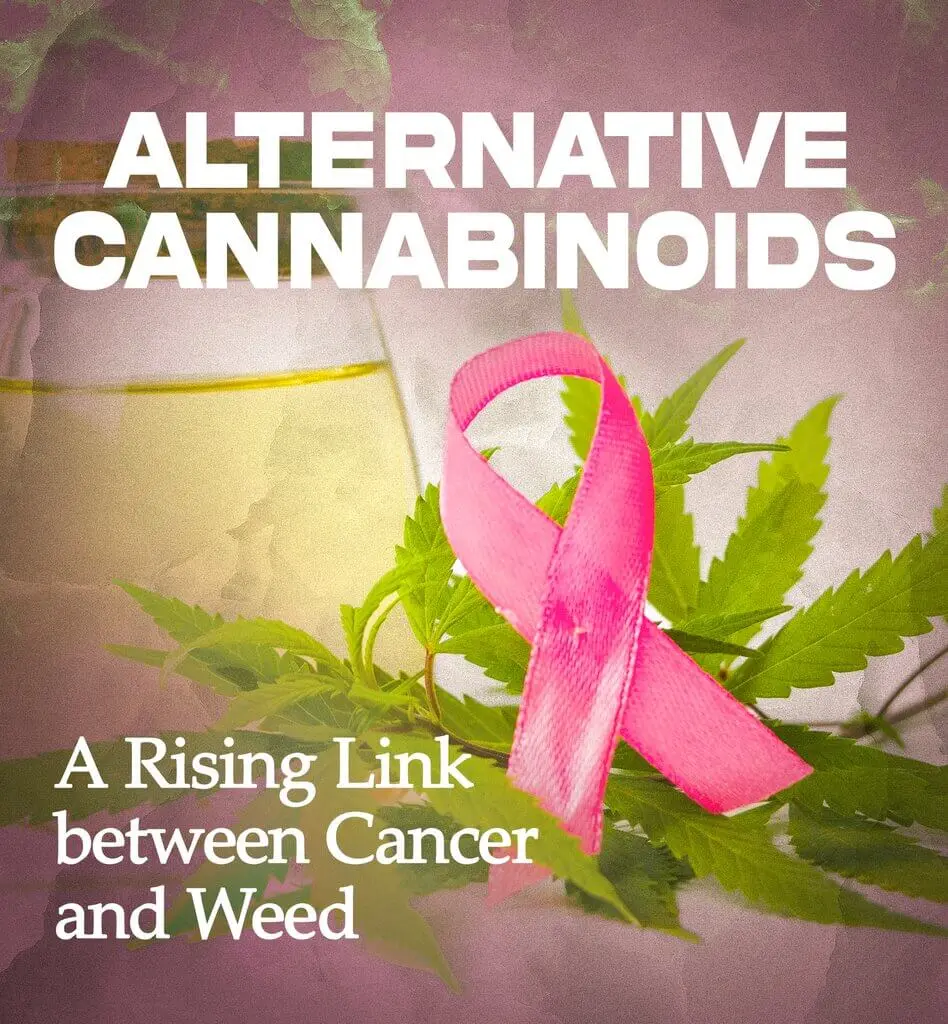JACKSONVILLE, Fla. (420CanNews) — Anyone who has ever toked themselves into uncontrollable giggles could hardly imagine that their recreational pastime might also help people fighting cancer.
That’s because cancer’s no laughing matter–even for the most carefree of stoners, right?
But for those wanting, even needing, to take a more upbeat view of such a devastating disease, the number of conditions cannabis can help with is growing. That’s because alternative cannabinoids now address many problems, from anxiety to inflammation. And while doctors are far from saying weed has any curative properties, its ability to address symptoms and side effects of cancer treatments has been gaining acceptance within the medical community.
For years, cannabis has had a bad rap, often linked to illegal activities and shady 420 lifestyles. But recent studies are changing the game for this ancient plant.
Turns out, cannabis is a secret weapon. Inside every human being, the endocannabinoid system helps the body maintain overall balance and well-being. When cannabis enters the scene, its compounds interact with this system, providing therapeutic benefits for various medical conditions.
THC vs. CBD: The Battle of the Alternative Cannabinoids
Regarding medical cannabis, a dynamic duo is at play: THC and CBD. These two cannabinoids have their own unique set of healing powers.
First up, THC. It’s the juice in the engine for getting high, but it’s also a formidable asset in addressing tough symptoms from conditions like arthritis, multiple sclerosis, and neuropathy. Chronic pain, fibromyalgia, endometriosis, and migraines also fall to THC’s pain-relieving, sleep-enhancing, and inflammation-fighting powers.
According to studies, THC from marijuana plants may be useful in treating neuropathic pain, which is pain caused by damaged nerves, as well as nausea and vomiting brought on by cancer treatment.
A substantial body of clinical research suggests that marijuana may provide several beneficial remedies, particularly for nausea, vomiting, and hunger stimulation. THC has been used to treat these symptoms in cancer patients for over a decade and in AIDS patients for several years in the form of Marinol (dronabinol). However, additional cannabinoids or cannabinoid mixtures may prove to be more potent than THC alone. If so, any medications developed due to these discoveries may help cancer patients and persons with AIDS.
And don’t forget about CBD, the unsung hero of the cannabis world. CBD won’t lead to a high, but many in the medical field tout its therapeutic benefits. These benefits include soothing anxiety, easing pain, treating epilepsy, and potentially tackling inflammatory bowel disease, PTSD, and glaucoma.
Researchers are examining whether CBD helps lessen some of the negative effects of cancer and its treatment, such as pain, nausea, insomnia, and anxiety. Other researchers are looking at whether CBD could inhibit or stop the spread of cancer.
For those who live in a state where cannabis is legal, doctors may consider recommending it for chronic pain, per the American Society of Clinical Oncology recommendations. However, insufficient evidence supports using marijuana to treat nausea and vomiting in cancer patients following chemotherapy or radiation treatment.
Alternative cannabinoids like THC and CBD can be used safely to relieve symptoms, according to studies, but they have not yet demonstrated that they can be used to prevent or treat the disease. Cancer treatment that relies solely on marijuana and forgoes or postpones traditional medical care could be dangerous.
Do Cannabis Strains Make a Difference in the Treatment of Cancer?
CBD and THC have differing effects. Generally, products with a high CBD content will be more effective at reducing pain, while those with a high THC content will be more effective at reducing nausea or hunger. Like any therapy method employed, it is complex. Because of differences in genetic makeup, receptors, and interactions with pain medications, for example, different antidepressants function better in different people.
Legalizing the Leaf: A Shift in Policy
Medical cannabis has been around for ages, helping people find relief from various medical conditions. But it’s only recently that the medical community has started to sit up and take notice.
California was the first state to give medical cannabis the green light back in 1996. Fast forward to today, and over half of the United States and numerous other countries have hopped on the medical cannabis bandwagon.
That momentum built slowly, almost illness by illness. Take epilepsy, for example. In 2018, the FDA authorized Epidiolex, a CBD-based medication, to treat two rare forms of epilepsy. This was a game-changer for the medical cannabis industry and brought new hope to patients who hadn’t found success with standard medications.
And don’t forget about chronic pain – a condition that affects millions of people across the globe. Opioids, often prescribed to manage pain, can be highly addictive and have many side effects. But medical cannabis?
Many say it effectively treats chronic pain without the risk of addiction or pesky side effects.
So, as the medical cannabis movement continues to gain momentum, it’s essential to stay informed and consider the potential benefits this unconventional treatment could bring to countless patients worldwide.
What about Cancer?
While not a cure, the medical community appears to be embracing the idea of marijuana to manage symptoms related to cancer and its treatments. These symptoms include pain and nausea.
As more states roll out the green carpet for medical marijuana and incorporate cannabis into their treatment plans, the overall acceptance of weed and its benefits will only grow.
The same is true for alternative cannabinoids like CBDs, found on top of a list of cannabinoids. A handful of clinical trials are putting CBD and cancer-treatment breakthroughs in the same sentence, exploring the potential benefits of this dynamic duo.
Part of that evolution is picking the best cannabis strain for cancer treatment. Targeting the best cannabis strains and formulations for more effective symptom management and a personalized cannabis-infused treatment plan is part of the ongoing experimentation and reclassification of marijuana as medicine.
For instance, cannabis oil, also known as Rick Simpson Oil (RSO), is making waves in the cancer community to battle symptoms and control cancer cell growth rate. While scientists need to conduct more research, cannabis oil could be a new secret weapon on multiple fronts. Who knows how many benefits of Rick Simpson Oil will emerge once research starts to unravel the secret to healing cancer?
Cancer is like the ultimate supervillain; researchers worldwide are trying to find the superhero to take it down for good. While cannabis may not be that hero (yet), its role in addressing symptoms and side effects is helping patients improve their quality of life.
Overcoming Hurdles: Challenges and Solutions
While medical cannabis has been making waves, it’s still a bumpy road for the industry overall. One significant roadblock is the lack of standardization and regulation. Unlike traditional meds, which undergo thorough testing and regulation, medical cannabis is still in the Wild West.
This regulatory gap has led to bumps, like inconsistent product quality and potency, making it difficult for healthcare professionals to recommend it confidently. Plus, it’s been a bit of a headache for patients trying to get their hands on top-notch medical cannabis.
A growing chorus of voices advocates for better regulation and standardization, especially in protocols and quality control standards.
A Brighter Future for Medical Cannabis
Today, medical cannabis has come a long way from the negative stereotypes of being an illegal substance. With a growing fan base in the medical community and mounting research backing it up, medical cannabis is stepping up as a legit treatment option for a whole range of medical conditions.

While hurdles exist, it’s crucial to keep pushing forward to ensure patients access safe and effective medical cannabis treatments. As public acceptance grows and enlightened medical professionals and their patients make discoveries, cannabis could become a mainstream option for countless conditions, giving patients much-needed hope in their fight against illness and pain.
To get the best cannabis news for your everyday 420 reliable information, visit 420CanNews today! Remember to subscribe and follow us on Twitter and Linkedin.
— Story Filed By 420CanNews Staff
Here’s More Information on the Topic:
26 People Shared How Cannabis Has Changed Their Lives For The Better
https://www.buzzfeed.com/laraparker/cannabis-as-medicine
Marijuana (Cannabis): Good or Bad?
https://www.medicalnewstoday.com/articles/320984
Is Marijuana Safe and Effective as Medicine?
https://nida.nih.gov/publications/research-reports/marijuana/marijuana-safe-effective-medicine
What Are the Benefits of Marijuana?
https://www.healthline.com/health/medical-marijuana/benefits-of-marijuana


